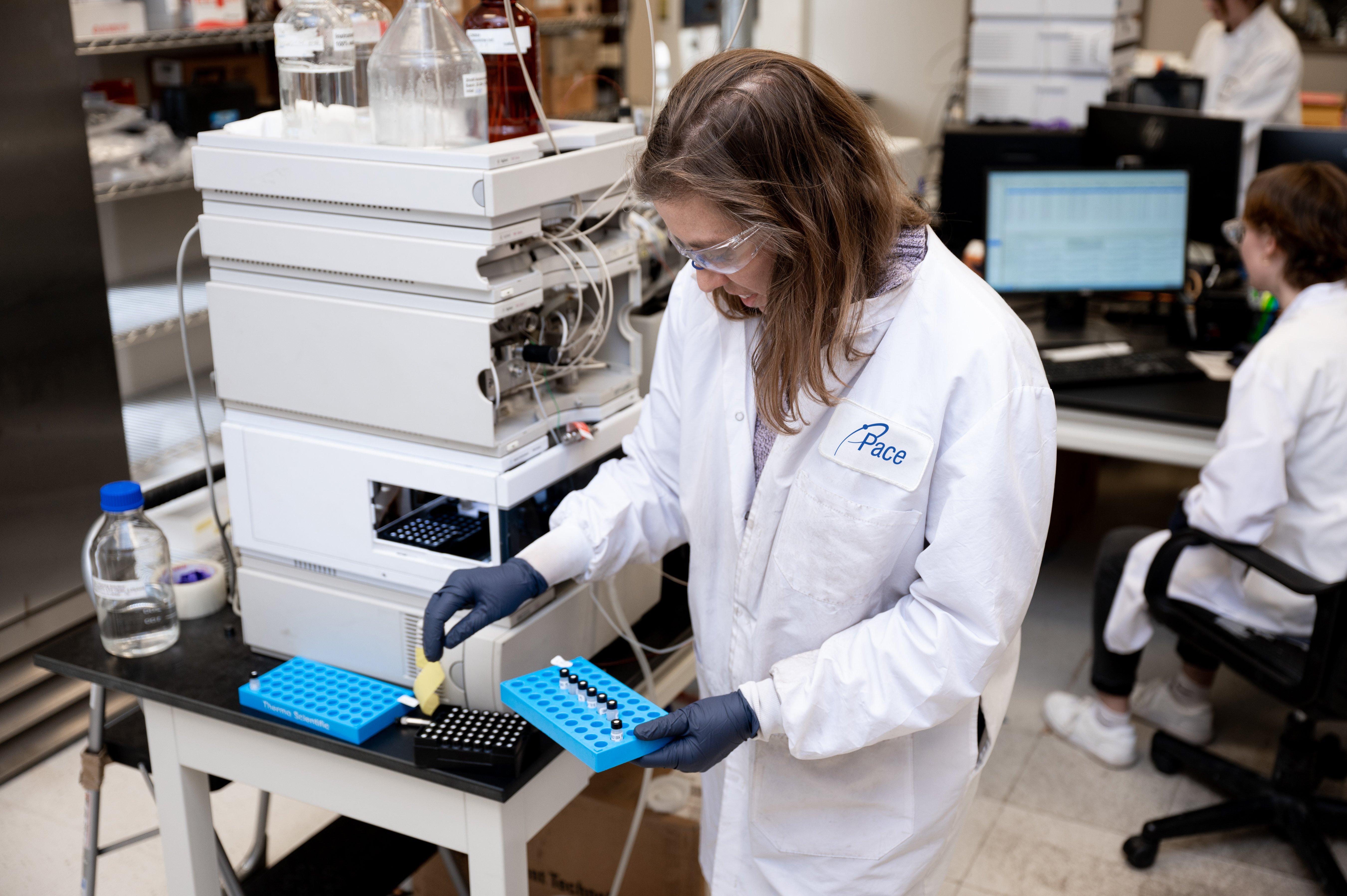Draft Method 1633 is not the Only Option for Analyzing PFAS in Non-Potable Water and Solids
.png)
December 2023
Many of our recent discussions around PFAS testing options involve Draft Method 1633. The most recent version, Draft 4, was published in June of 2023 and is considered “final” for wastewater, surface water, and groundwater. The EPA forecasts that the method will be finalized this December, 2023.
Draft Method 1633 was a step forward as it gave us a multi-laboratory validated, EPA-published PFAS method for non-potable water and solids. Once final and promulgated, this method will likely put an end to “laboratory SOP-based” methods (a.k.a. 537M or 537 modified). If that happens, it will provide much needed harmonization for the commercial laboratory industry.
However, Draft Method 1633 is not without its disadvantages and uncertainties. As discussed in a recent Pace® webinar, it is procedurally complex, which drives up costs and leads to longer turnaround times. Furthermore, some procedural questions, such as how to handle aqueous samples with high levels of suspended solids, are not yet resolved. This lack of clarity will likely result in lab-to-lab variability.
Despite not being finalized, some federal and state agencies already recommend or require Draft Method 1633 in certain scenarios. In its guidance to the states, the EPA recommended Draft Method 1633 for NPDES (National Pollutant Discharge Elimination System) permitting. The DOD (Department of Defense) also issued a memo stating that Draft Method 1633 will be required when definitive data is needed for all DOD projects, excluding drinking water compliance where EPA drinking water methods are required.
For projects where Draft Method 1633 is not required, there are other options for analyzing PFAS in non-potable liquids and solids. Some of them come with significant advantages.
ASTM D8421 and EPA 8327
In addition to “laboratory SOP-based” methods (a.k.a. 537M or 537 modified), two methods now available at Pace® are ASTM D8421 and EPA 8327.
EPA SW-846 Method 8327 was published as draft in 2019 and as a final method in 2021. The SW-846 compendium is a collection of analytical methods for evaluating the chemical and physical properties of solid waste samples, primarily hazardous waste. However, EPA 8327 was explicitly designed for the detection of PFAS utilizing Liquid Chromatography/Tandem Mass Spectrometry (LC/MS/MS) in aqueous matrices, such as reagent water, surface water, groundwater, and wastewater effluent. This method was validated using SW-846 format and requirements and, as published, quantitates 24 PFAS compounds in these matrices..png?width=357&height=357&name=Untitled%20design%20(7).png)
ASTM D8421 was published by the American Society for Testing and Materials in 2021 with later revisions. This method was published and validated to quantitate 44 PFAS compounds in non-drinking water, groundwater, surface water, and wastewater. This method was validated on nine wastewater matrices at the EPA Region V laboratory and in a multi-laboratory study conducted in collaboration with the EPA and ASTM D19.
Watch: A Deep Dive into EPA 8327 / ASTM D8421
Both ASTM D8421 and EPA 8327 are “performance-based” methods, meaning the procedure can be adapted or optimized for specific projects or analytical goals. For example, ASTM D8421 includes language allowing for isotope dilution calibration and quantification. Although EPA SW-846 Method 8327 is silent on this, SW-846 methods are widely considered to be “guidance” methods. As such, laboratories may alter method procedures if validated and documented to meet the method-dictated quality control performance requirements.
In addition, ASTM D8421 and EPA 8327 are nearly identical procedurally, so Pace® has harmonized its procedure and can therefore cite either method. The choice depends on customer preference and certification requirements. This is a fairly common scenario when two consensus organizations develop similar methods.
Three Advantages of ASTM D8421/EPA 8327
As noted earlier, Draft Method 1633 is procedurally complex. To learn more about this, the webinar we conducted on Draft 3 of Draft Method 1633 is still available on-demand. A less procedurally complex method, ASTM D8421/EPA 8327 has three main advantages over Draft Method 1633:
- Lower Turnaround Times: Results can be delivered faster due to a more efficient extraction procedure and the ability to omit some of the “pre-tests” required by Draft Method 1633. Pace® can deliver results with a 10-day standard turnaround time (TAT) and even more rapidly when needed.
- Lower price point: Optimized procedural requirements also translate into a lower price point than other PFAS methods.
- Lower volume: Analyzing aqueous matrices only requires a 5 mL sample (versus 500 mL required using Draft Method 1633). Among other benefits, lower volume samples translate into significantly reduced effort in the field and reduced shipping costs.
ASTM D8421/EPA 8327 Validation
ASTM D8421 was recently validated by an inter-laboratory study (ILS) for 44 compounds using both reagent water and difficult matrices, including landfill leachate, metal finisher wastewater, POTW (publicly owned treatment works) influent and effluent, and other non-potable water matrices. The compound list for ASTM D8421 includes all 40 compounds in Draft Method 1633, with 4 additional compounds added.
Additionally, Pace® successfully performed a comprehensive validation of its procedure using requirements prescribed by EPA and NELAC, including initial demonstration of capability (IDOC), 40 CFR-compliant method detection limit (MDL) studies, and NELAC-compliant proficiency testing (PT). Detection limits meet the EPA RSLs (Regional Screening Levels) and DOD Office of the Secretary of Defense screening levels for soil and water.
Learn More
To get more details on ASTM D8421/EPA 8327, you’re invited to watch our deep dive webinar. I am joined by Stephen Somerville, PFAS Technical Director at Pace®. Few people I know are as well-versed in PFAS test method development and validation as Stephen, so watching his presentation is time well spent.
Watch: A Deep Dive into EPA 8327 / ASTM D8421
If you have a question or a project in mind, you can also contact the Pace® PFAS team. We’d be happy to answer your questions or discuss your project goals in more detail.


.png)